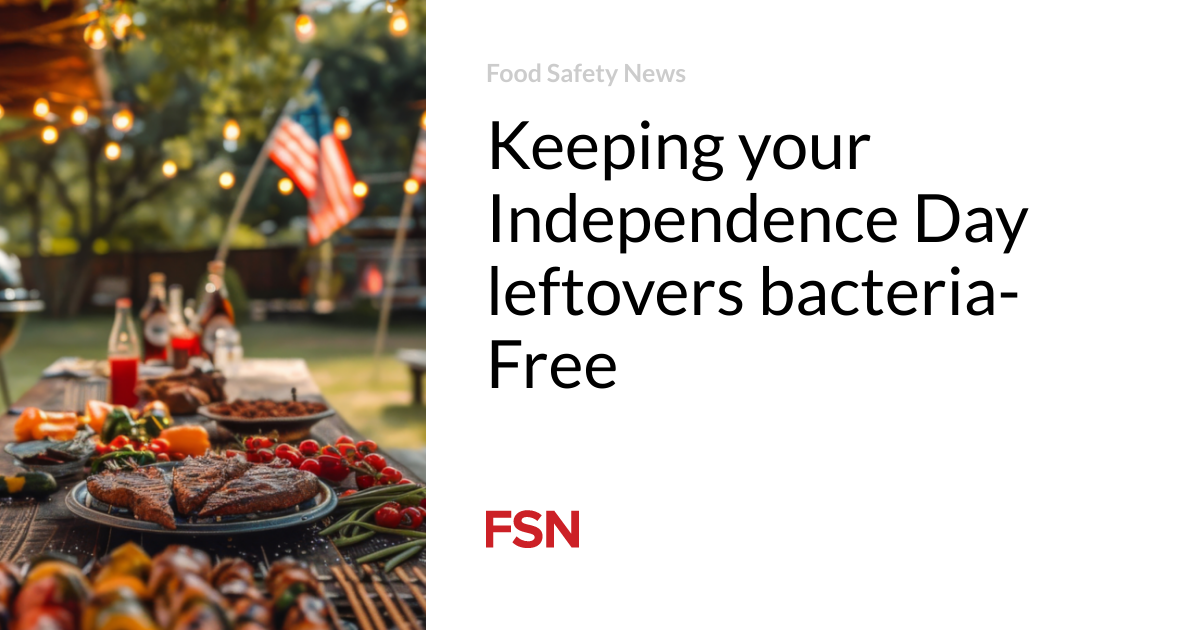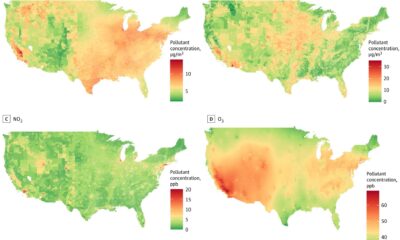Food
Keep your leftovers germ-free this Independence Day

Today, Americans are getting ready for barbecues, picnics and outdoor parties. As you enjoy the festivities and indulge in delicious grilled meats, fresh salads and other festive treats, paying attention to food safety is crucial, especially when it comes to leftovers. This week’s high temperatures across the country require extra caution to ensure food safety.
The U.S. Department of Agriculture emphasizes proper handling of leftovers to prevent foodborne illness.
Here are some essential food safety tips to keep in mind:
The two-hour rule
- General rule: All perishable items should be refrigerated within two hours of removing them from the oven or refrigerator.
- Hot Weather Adjustments: If you are outside and the temperature reaches 90 degrees Fahrenheit or higher, the time limit is reduced to one hour.
- Danger zone: After one to two hours, perishable food enters the danger zone, which is between 40 and 140 degrees Fahrenheit. Within this range, bacteria can multiply rapidly, posing a significant food safety risk.
- Action Step: If food has been left out for more than two hours, throw it away to prevent foodborne illness. When in doubt, throw it away.
Use small and shallow containers
- Storage tip: Choose small and shallow containers if you store leftovers in the refrigerator or freezer.
- Benefits: These containers allow for faster cooling compared to larger ones, reducing the time in which bacteria can grow.
Freeze or consume within four days
- Freezing Guidelines: If you plan to store your leftovers for an extended period of time, freeze them within four days.
- Preventing the Growth of Bacteria: Freezing food prevents the growth of most food poisoning bacteria, with exceptions such as Listeria and Hepatitis A.
- Quality Considerations: The quality of frozen leftovers can deteriorate over time. Consume them within two to six months for optimal taste and texture.
- Reheating Temperature: When reheating leftovers, make sure they reach an internal temperature of 165 degrees Fahrenheit to eliminate any bacteria.
Guidelines for proper reheating
- Reheating in the microwave:
- Cover and turn the food over so it is heated evenly.
- Spread the food evenly in a covered microwave-safe glass or ceramic dish and add some liquid if necessary.
- Check the internal temperature of the food in several places with a food thermometer after letting it rest.
- Reheating sauces, soups and gravies:
- Bring them to a boil to ensure that the entire mixture reaches a safe temperature.
- Avoid slow cookers for reheating:
- Slow cookers are not suitable for reheating leftovers. Opt for methods such as stovetop, microwave, or oven heating to ensure the food reaches the recommended internal temperature of 165 degrees Fahrenheit.
Additional safety measures
If you have questions about food safety, the USDA offers several resources:
- Phone call: USDA Meat and Poultry Hotline at 1-888-MPHotline (1-888-674-6854).
- E-mail: MPHotline@usda.gov.
- Live chat: Visit www.ask.usda.gov from 10am to 6pm Eastern Time, Monday through Friday.
By adhering to these guidelines, you can enjoy your Fourth of July celebrations with peace of mind knowing that your leftovers are safe to eat. Happy Independence Day!
(To sign up for a free subscription to Food Safety News, click here.)













